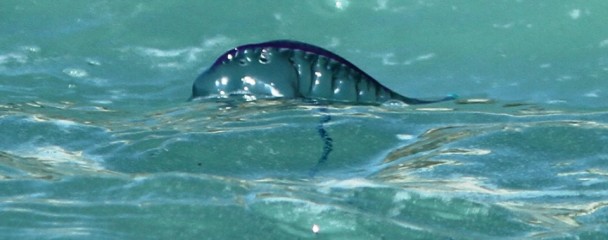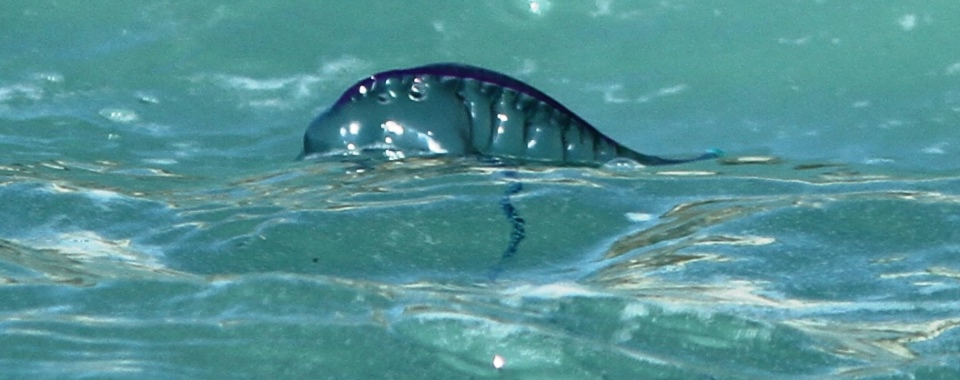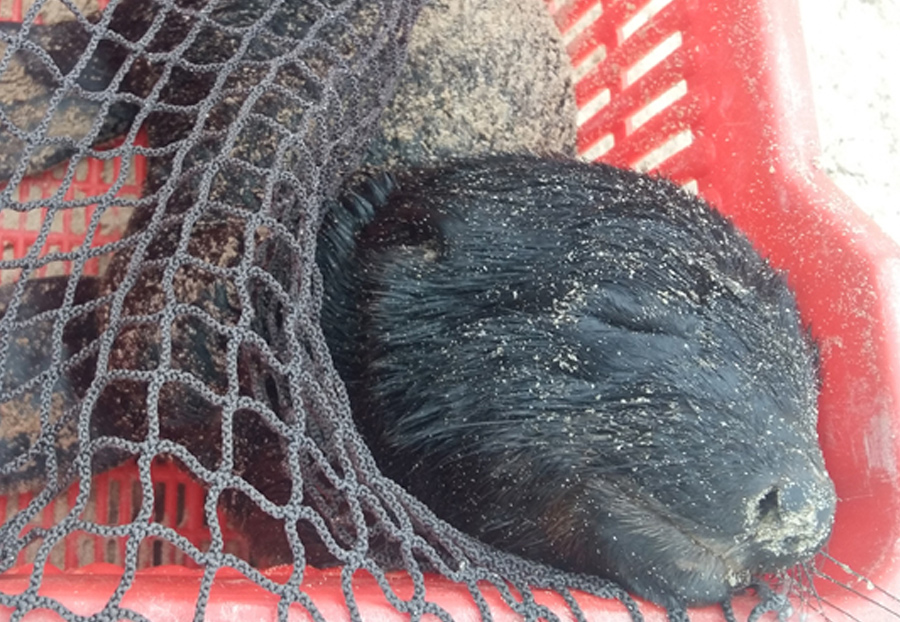Facts on Bluebottles
 Summer has arrived and with it warmer weather and increased sea temperatures which attract more people to the beaches for a swim. When swimming and walking on the beach, look out for bluebottles or Portuguese man-o’-war (Physalia utriculus,). These strange organisms float in open waters of most oceans and are cast ashore after strong onshore winds (easterlies here in Plett). They have long venomous tentacles typically 3m (can reach up to 10 m) in length hanging below a gas filled bladder that keeps it afloat. Exercise extreme caution when seeing them in the water and even if they look dried out on the beach, do not step on them as the tentacles can still sting you. Their sting can be acutely painful and it is recommended that if you are stung use alcohol, meat tenderiser or very hot water with a pinch of Epsom salts to bring relief. Do not rub the sting and avoid washing it with fresh water.
Summer has arrived and with it warmer weather and increased sea temperatures which attract more people to the beaches for a swim. When swimming and walking on the beach, look out for bluebottles or Portuguese man-o’-war (Physalia utriculus,). These strange organisms float in open waters of most oceans and are cast ashore after strong onshore winds (easterlies here in Plett). They have long venomous tentacles typically 3m (can reach up to 10 m) in length hanging below a gas filled bladder that keeps it afloat. Exercise extreme caution when seeing them in the water and even if they look dried out on the beach, do not step on them as the tentacles can still sting you. Their sting can be acutely painful and it is recommended that if you are stung use alcohol, meat tenderiser or very hot water with a pinch of Epsom salts to bring relief. Do not rub the sting and avoid washing it with fresh water.
Bluebottles belong to the order Siphonophora which includes species that float or pulse through the water. What is special about Bluebottles is that they are not 1 animal but rather a colony of four different specialised polyps and medusae fused together. The gas filled pneumatophore (bladder) is the sail that can be left or right handed. The gas inside consists of up to 90% nitrogen and 5-20% carbon monoxide. The bladder might look passive, but is actually capable of movement and approximately every 3 minutes it flops over on alternate sides to prevent it drying out. The tentacles trail below the float and are capable of remarkable contractions, from 10 m to 10 cm, allowing them to pull prey up to the feeding parts of the organism (gastrozoids). The tentacles consist of three different zooids each with it’s own function; dactylozooid (defence), gastrozooid (feeding) and gonozooid (reproduction). The main part of the tentacle consists of the dactylozooid that bears stingers with venom-filled cysts. The tentacle is constantly “fishing” for small fish and shrimps. When a fish or shrimp has been caught contraction cells in the tentacle drag the prey towards the gastrozooid, which surround and digest the food.
The sting of a Bluebottle causes severe pain to humans and leaves a whip-like red rash on the skin for 2-3 days. The venom can travel in the body to the lymph nodes and can cause severe pain. Normally a sting does not need to be attended to by a medic, but if the pain is persistent or if the rash worsens medical attention must be sought. Some people are also allergic to the sting so when not treated the sting can cause death. To treat a Bluebottle sting start by removing any of the tentacle that is left on the skin (not with bare fingers), apply salt water (NOT fresh water as it make the sting worse), followed by hot water (45°C) with a pinch of Epsom salts for 15-20 minutes to kill the last part of the venom in the wound. Contrary to the treatment of other marine stings, do not use vinegar to treat a Bluebottle sting as it increases the toxic effects of this species. Rather use alcohol (methylated spirits or liquor) and try to avoid rubbing the sting.
Despite their toxicity to humans, bluebottles are eaten by several animals, including the nudibranch (Glaucus sp), purple-shelled snail (Janthina janthina), plough shells, Loggerhead turtle, sunfish and the blanket octopus (Tremoctopus) which is immune to their venom and has been seen carrying broken tentacles around for protection.




